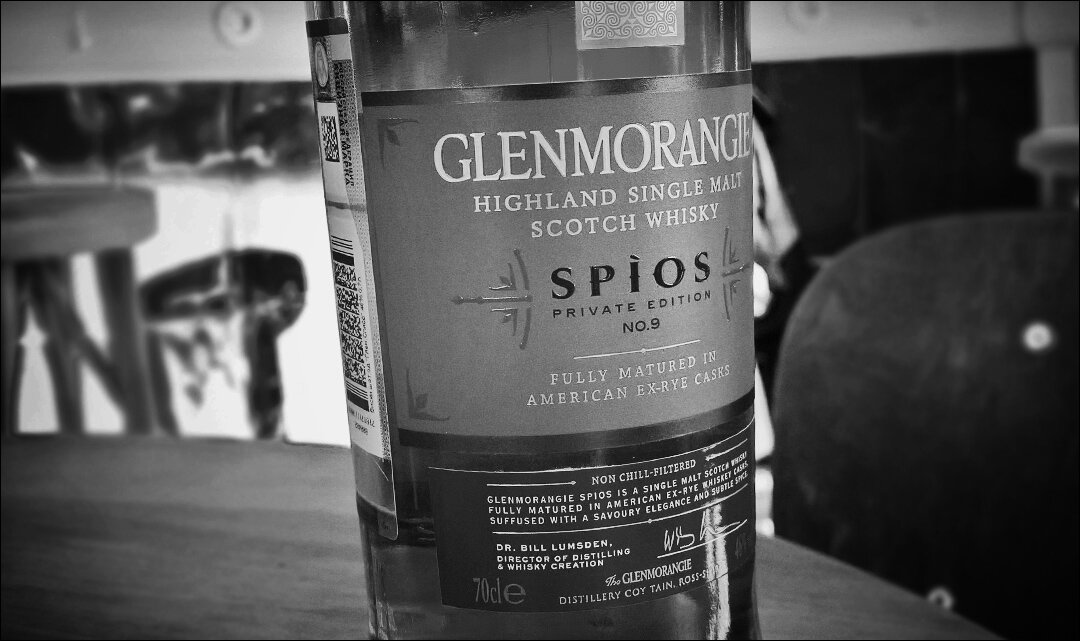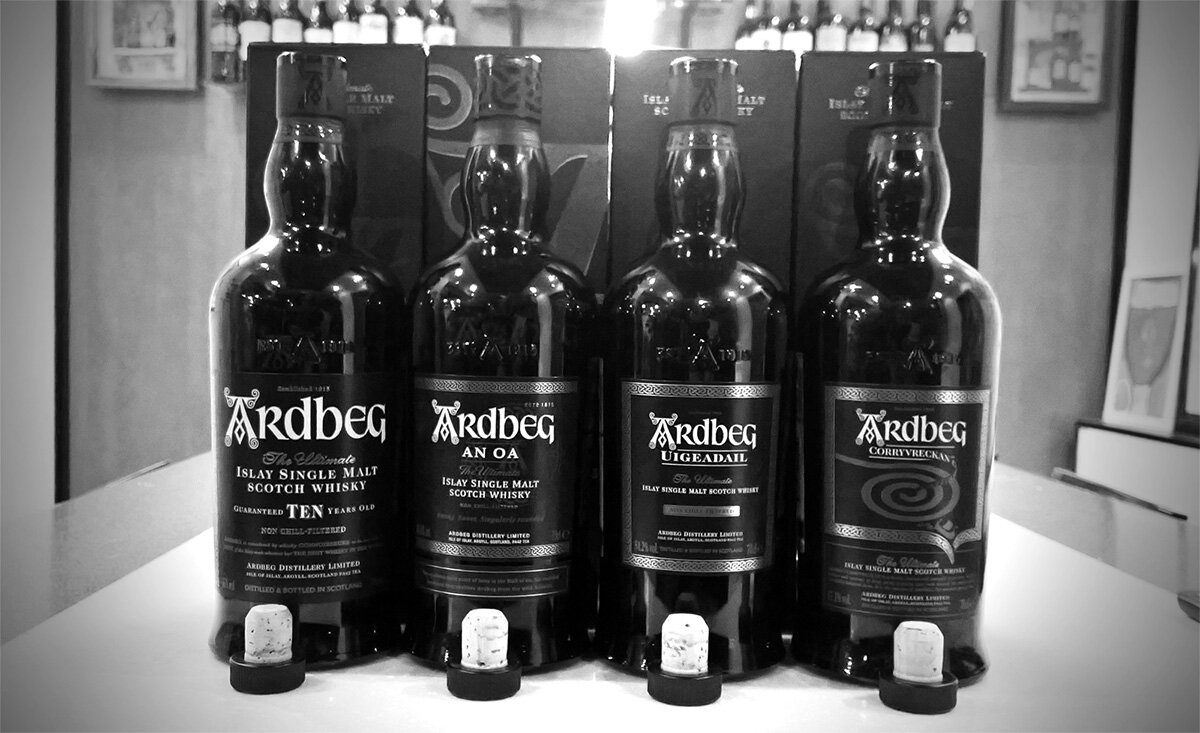Visitors at distilleries often ask a question about the strength of a water-ethanol mixture before casks filling. And often they have an answer to this question, but rarely they have any explanation why this specific level is chosen. That is why this matter is discussed quite regularly at different whisky-related conferences on the Internet. Though it seems that everything is quite obvious, the figure of 63.5% ABV for Scotland is well-known, nonetheless, this matter still remains a kind of a mystery, raising many questions. What kind of questions? Here they are, sometimes quite simple:
- Does every distillery fill casks at 63.5% ABV? If not, why?
- Are there any legal restrictions for the casks filling strength?
- What is the reason for this figure, 63.5%?
And so on. Let’s try to find answers to these questions, not limiting ourselves only to Scotland, though Scotch will have a lot of attention. I bet you will hear something completely new.
Laws
Let’s start with the legislative restrictions. Are there any? Yes, but in the only one country — in the USA, where it is forbidden to fill barrels with a mixture having alcohol more than 62.5% by volume (125 US proof). Why is the upper limit set? Due to the same reason why any straight whiskey must be aged in new barrels in the United States – in order to support the woodworking industry. Whiskey is distilled usually using columns at a relatively high strength there, and filling barrels at the original new make strength would significantly reduce the need for new wood containers. An entry limit of 125 proof (62,5% ABV) appeared only in 1962 when the US Treasury raised it from 110 proof. Before that the barrel entry proof was set as an interval between 100 and 110 proof (50-55% ABV), it was done after the Prohibition and 100 proof was taken a base for duties calculation. Before the Prohibition, there were no legislative restrictions on entry proof, meanwhile Bottle-In-Bond Act of 1897 stipulated for the first time that whiskey of that category shall be not only aged in casks (not less than four years) but also shall be filled in bottles at 100 proof (50%ABV). This law just secured the good practice of pre-bottling era, when people were buying whiskey as a bulk, coming with their own jugs to taverns. Those times distillers practised filling barrels for whiskey transportation at around 103-107 proof (51,5%-53,5%) to secure that it will be delivered to customers at not less than 100 proof (50% ABV) – this strength considered to be right for drinking then.
So, that is the way legislative initiatives in the United States emerged and evolved at the intersection of consumer preferences and the wood industry lobby. There are no legislative restrictions nowhere else – neither in Scotland, nor in Ireland, nor in Canada, nor in Japan, and so on.
Does everybody fill barrels at 63.5%?
No, not everybody, even if we talk about Scotland only. However, let’s see first what are practices in other countries – fortunately, the world of whisky is very wide today.
As it has become clear, it is simply prohibited to fill barrels at 63.5% ABV in the United States, but often distilleries do not fill them at 62.5% also, they lay barrels at significantly smaller strength. For example, Wild Turkey had been diluting its new make to 52,5% for a long period, but then gradually shifted to 57,5% via 55%. Michters’ lays barrels only at 51,5%, Makers’ Mark at 55% and Four Roses at 60%. It happens not only because of the old memories, there are also other factors. First of all, new virgin oak is used in the USA and it should be used cautiously. Further, barrels “work” very actively in a dry climate and at considerable temperature differences (which is also aggravated by multi-level warehouses of American distilleries) and in such conditions water evaporates faster than ethanol, so, the strength of the spirit goes up in a significant part of barrels (usually from the middle to the top of warehouses).
As for Canada, there are many practices there, as well as there are many types of distillate produced. The “base whisky”, which is made using columns at high strengths, is laid at 76-78% ABV usually. The “flavour whisky” is produced in different ways (double distillation using column and pot still, single distillation using column, single distillation using a pot still with a column, double distillation using only pot stills) and it is filled into casks in different ways. For example, Hiram Walker & Sons, the largest distillery in the North America, fills barrels with corn, rye or wheat spirit at 58% ABV, meanwhile Glenora Distillery adheres to the Scottish tradition and lays its malt whisky at 63.5%, although at the very beginning they tried to start maturation process at a higher ethanol volume.
The Japanese follow the Scottish with 63.5%, and Swedes, for example, at Mackmyra, fill casks at a little less volume of ethanol, at 63%. In Taiwan there are no legislative restrictions for casks filling, but there are very strict requirements for fire-fighting equipment and control of warehouses if to lay casks with the mixture above 60% ABV, so, distillers prefer not to reach this figure. For example, Nantou Distillery fills casks at 59.5%.
In France Armorik also filled casks at higher strengths, but some time ago they began to lay casks at 63-64% of alcohol by volume.
Ireland amazes with its variety. Midleton and Tullamore DEW fill casks at 64% ABV, Teeling – at 62%, Waterford does not dilute its new make and lays it at around 71%, Dublin Liberties is going to do the same way, and Walsh has still not decided what to choose and continues experiments with different strengths.
Here we came back to Scotland finally. Indeed, most of the whisky distilleries use here the figure of 63.5% ABV. But not all. Here are some examples of distilleries laying casks at a different level of alcohol by volume in the water-ethanol mixture: Highland Park works at 69.8%, Aberlour at 69.1%, Bruichladdich at 70-72%, Knockando at 63%. I would like to remind you that we are talking now about malt spirit, as grain spirit is filled into casks in Scotland at a higher entry proof, 70-71% in standard.
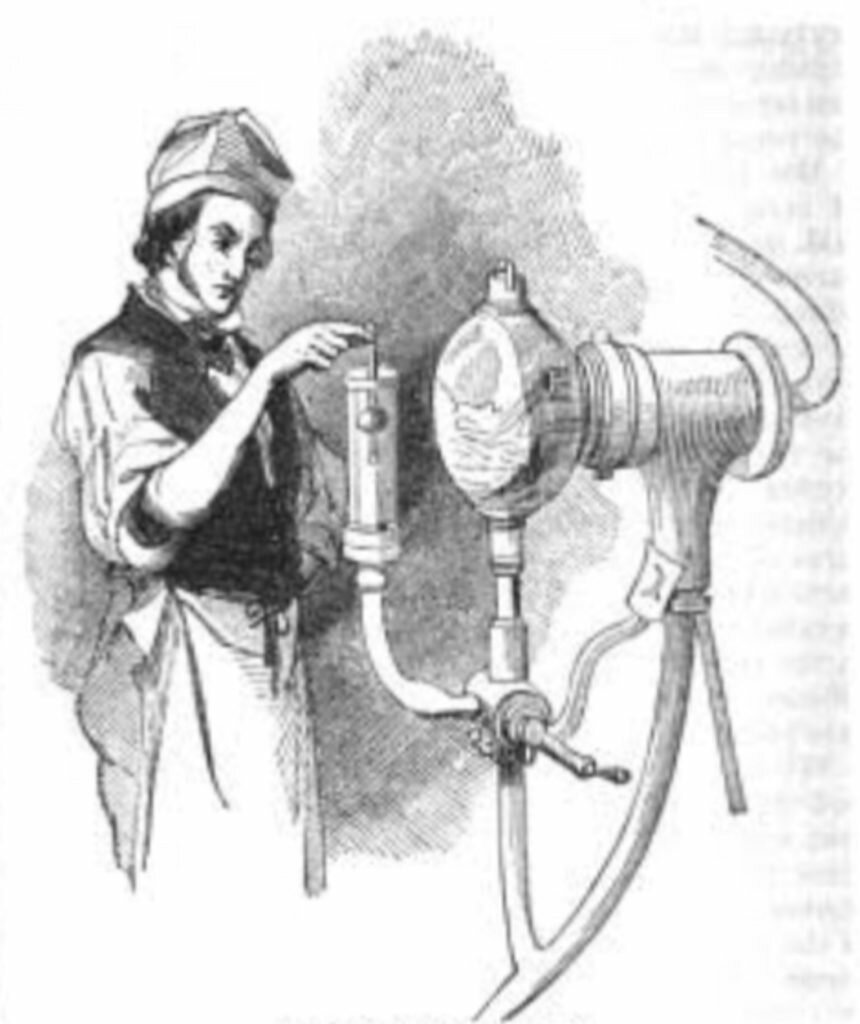
Where did the standard of 63.5% ABV come from?
To understand why someone follows «the rule of 63.5%» and why someone does not, let’s look for the most probable reason for this standard to appear in Scotland.
The practice to lay casks at 63.5% ABV (in British proof 11 over-proof, or 111 proof) exists for quite a long time, we may found evidence of such casks filling strength in the first third of the 20thcentury. But let’s go back, far more back, long before 1915 (it became mandatory to age whisky in wood containers in Scotland in that year), namely – to the first half of the 19th century. Those times casks were used to transport spirit from distillers to rectifiers – companies which by the re-distillation process “rectified” or purified the spirit, compounding it with various vegetable substances to impart flavour. In that way very popular drinks were produced in England then – British brandy, British rum, gin, different cordials. Scottish distilleries also supplied their spirit to English rectifiers and had to follow the legislature, which stated that the raw spirit may be sold by a distiller to a rectifier only at two different strengths – 23 over-proof (123° or 70,2% ABV) and… 11 over-proof (111° or 63,5% ABV). Shall I tell you now why later, when whisky ageing became mandatory and a kind of a casks filling standard was in need along with the appearance of excise warehouses, these strengths, well-known to the industry, were kept: grain spirits were filled at around 70%, and malt spirits at 63,5%?
Excise officers were always present at the casks filling process and certified a volume of alcohol in the mixture. Existance of the same ABV in all the casks simplified the calculation of duties at releasing casks from excise warehouses.
Of course, I would like to think personally that just a nice figure in British proof — 111° — played a certain role when the filling level was chosen, but the reality is always more prosaic – duties and taxes.
A kind of standard was in need not only in order to simplify duties calculations and payments. What is more important, the same strength of casks filling was necessary in order to realize casks trading and exchange between different producers of blended scotch. Since the blended Scotch whisky conquered the world at the beginning of the 20th century, the issue of an equal exchange of spirits was very vital (as you know, there are from 20 to 50 different malt spirits in one batch of blended whisky). All the distilleries were able to fill at 63,5% ABV, though they had different new make strengths, and at some distilleries new make proof was relatively low due to the sufficiently lower level of tails cut. Certainly, the strength of the matured whisky in casks was slightly different at the moment of sale/exchange, but it was possible to neglect this moment, considering that climatic conditions are almost identical practically everywhere in Scotland and lost of ethanol during maturation period is comparable.
It is yet necessary for me to work a little bit in the London Library sometime in order to understand why legislators appointed 123 and 111 proof as strengths for raw spirit trade in the first half of 19th century, but it was surely not related to the science, as there were no scientific researches on the interaction of spirit and wood those times. The science came later, in present times, in the second half of the 20th century. And these scientific studies have shown that at approximately 58% of the alcohol by volume in the spirit the ethanol-water mixture achieves the maximum possible interaction with a cask: the distillate absorbs the largest number of elements from wood.

The difference in the spirit interaction with the wood is explained by the fact that various proportions of water and ethanol in the solution (more precisely, different surface tension, viscosity and solvating power of mixture) in different ways penetrate into the wood and extract compounds from it. Water and ethanol «wash out» different components from wood. Alcohol «works» with lipophilic compounds, sterols, lactones, lignin-derived compounds. Water dissolves sugars (arabinose, glucose, xylose, fructose), tannins, glycerol, hemicelluloses. So, once chosen strength of 63.5% (111 proof) turned to be close enough to the ideal strength for spirit interaction with а cask. And interacting with a cask is a cornerstone matter for receiving a good whisky, so, this practice spread from Scotland to most of the other countries.
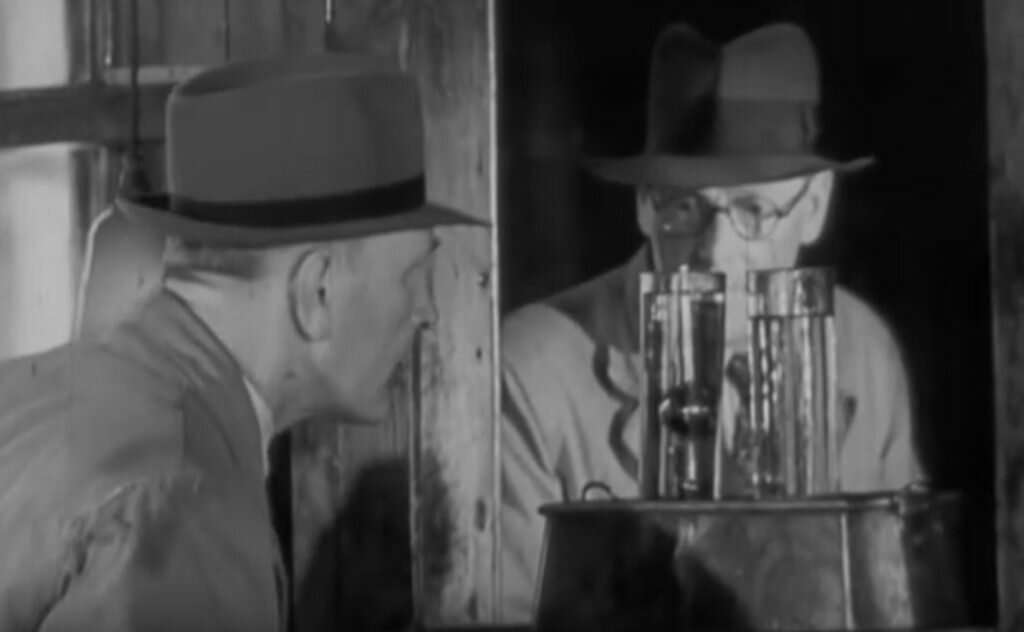
Why don’t everyone use this standard?
Why then do some distilleries abandon this seemingly universally accepted standard of 63.5%? There are several reasons for that.
Methods of tax control have changed and improved, excise officers stopped to go to work in their offices at distilleries in Scotland since the early 1980s, though even before that not all the distilleries stuck to this standard. Further, now not all the companies are interested in casks exchange or sale, some companies sell almost all the volume of whisky they produced as a single malt whisky.
Besides, some distillers believe that changes in the extraction of wood-derived compounds are not so critical with the increase of the spirit strength up to 69-71%; another believe that decrease of the spirit strength would do the work better (and we may agree with both if to analyze the graph presented above). In both cases they choose alternative strengths to lay casks.
At the same time, the abandonment of new make reduction before casks filling, besides the fact that the technological process becomes shorter for one operation, helps to save significantly on required casks quantity. Thus, filling at 70% against 63.5% saves more than one barrel for every 10 filled (it is necessary to add more than 20 litres of water in order to bring 190 litres of 70% spirit to 63.5%). If to remember that it is necessary not only to buy and deliver these barrels, but also to store them somewhere for years… So, warehouse logistics also becomes much more effective when you decide to refuse from spirit reduction (and here we may also recall the Taiwanese requirements for fire-hazardous warehouses).
Simultaneously a distiller receives an opportunity to mature whisky for a longer period — both in terms of reduction of wood-derived components extraction level, and in terms of having the eligible strength of whisky in those climatic zones, where during ageing period evapourates from the water-ethanol mixture faster than water does. After all, we know that now almost everywhere you can not bottle whisky with the strength less than 40%.
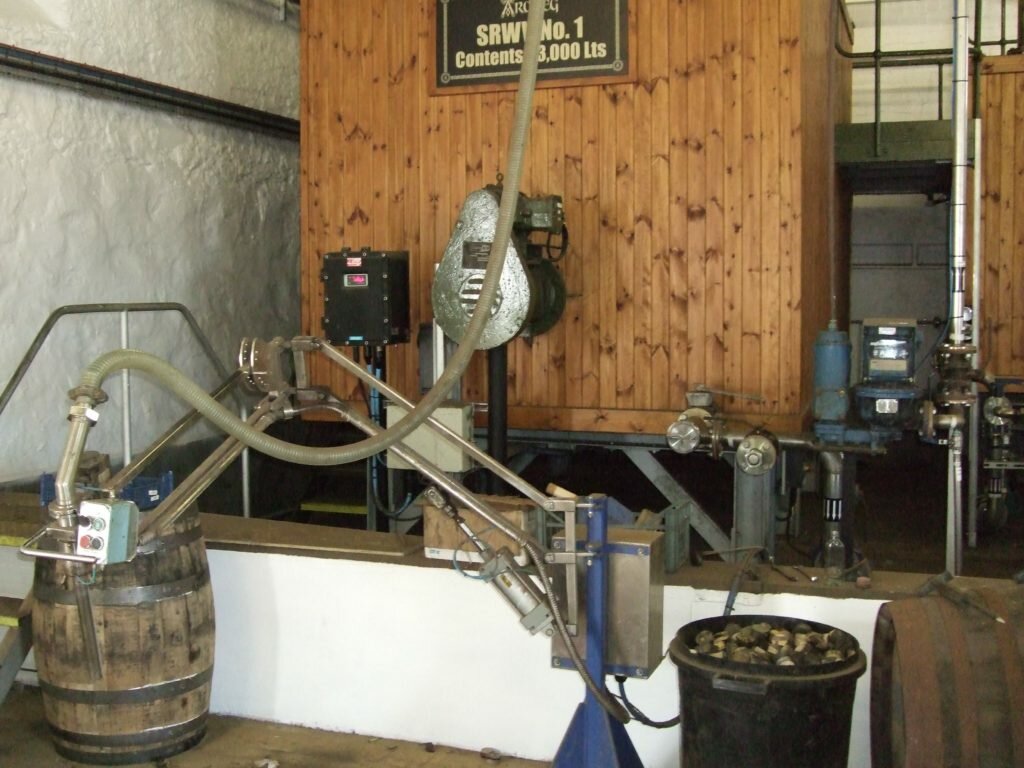
Conclusions
So, we found the origins for 63,5% ABV to become a kind of an industrial standard for casks filling, and we also managed to find quite a lot of reasons to follow this standard – financial, chemical and commercial. At the same time, it is also quite possible to understand those who do not follow this standard, as a result of legislative, economic and/or technological issues.
It is interesting that not all distilleries reveal data about the strength of distillate laid, arguing that they do not want to disclose their technological secrets. In my opinion, it is a bit strange, because thought whisky production process has become well-researched and very transparent now, it is so multifactorial and so specific for each distillery (terroir-like), that no disclosed data will allow to repeat the organoleptic profile of any distillery. In this regard, I always refer to the example of Springbank: boards with the description for all processes with all the figures are hanged on walls at each technological stage – whether it helped to anybody to become a second Springbank?
It is important to remember that the volume of alcohol in the water-ethanol mixture is only one of the factors that affect only one of the stages of whisky production – maturation. And at this stage, there are a lot of other very important factors: a type of the wood of the cask, cask volume, quantity of the previous cask fills, cask charring level, what was held in that cask previously, how and where it will be stored, etc. Therefore, the information about cask filling strength is extremely interesting but does not allow us to make any specific conclusions about what kind of whisky awaits us in the future.
Alexey Nearonov
I would like to express my deep gratitude for the help to the following gentlemen:
- Don Livermore, Hiram Walker & Sons
- Lauchie MacLean, Glenora Distillers
- David Roussier, Distillerie Warenghem
- David Lind (Loch Lomond Group) & Igor Shalamov (Ladoga Group)
- Grant Macpherson (Springbank Distillery)
- Chu-Yeh Cheng (Nantou Distillery)


